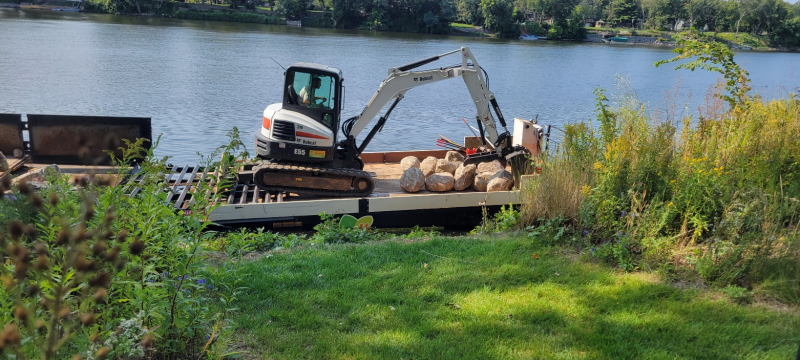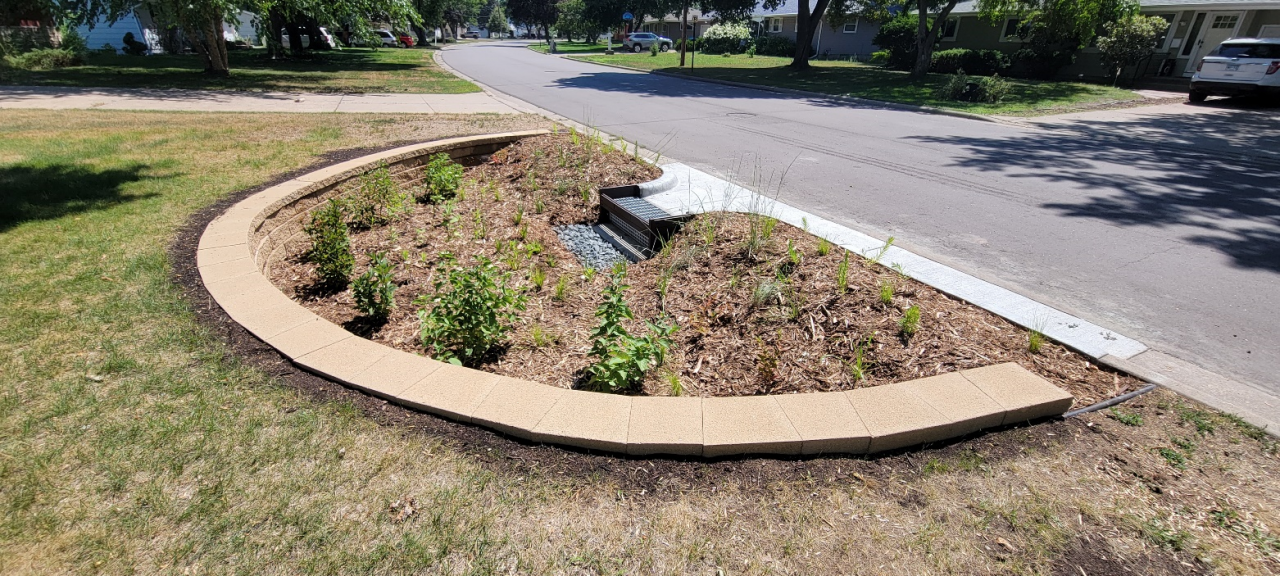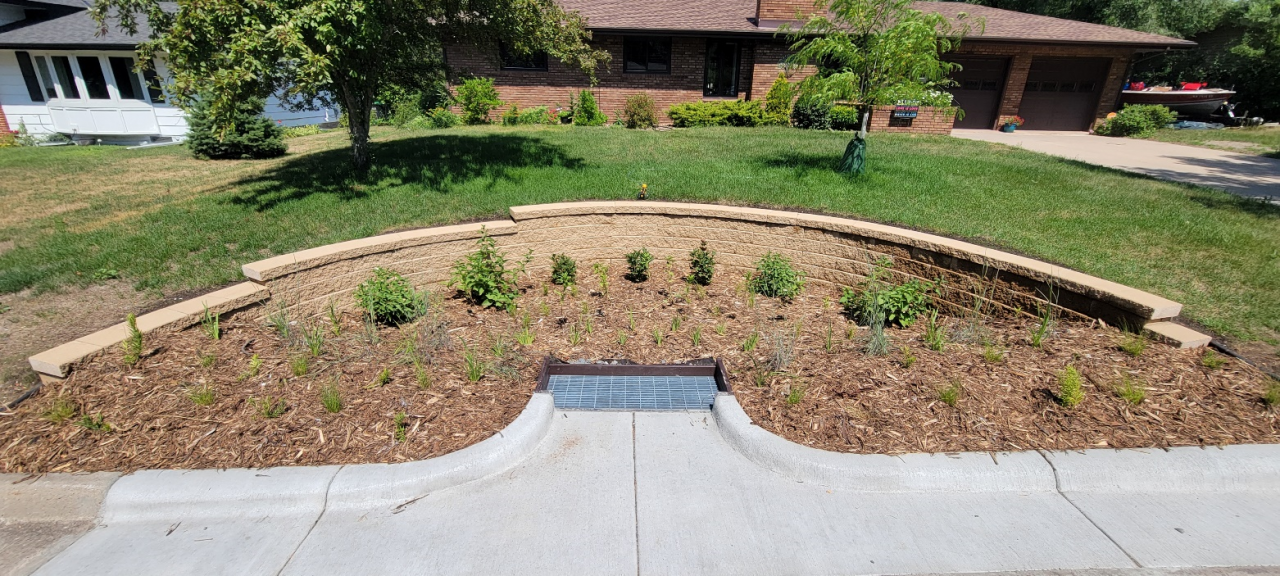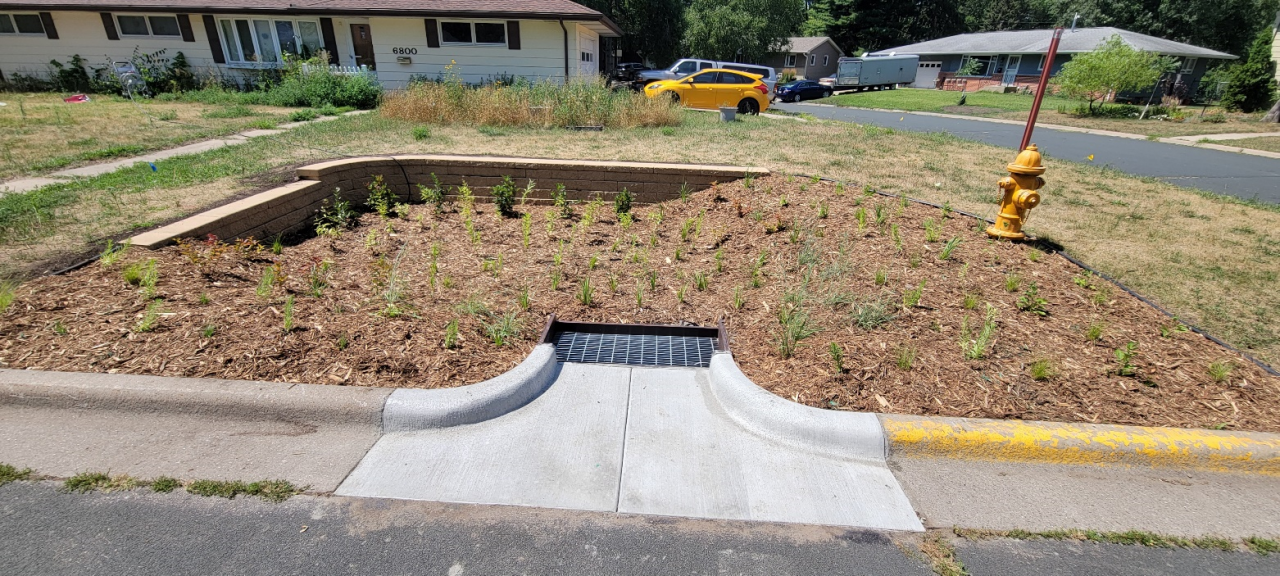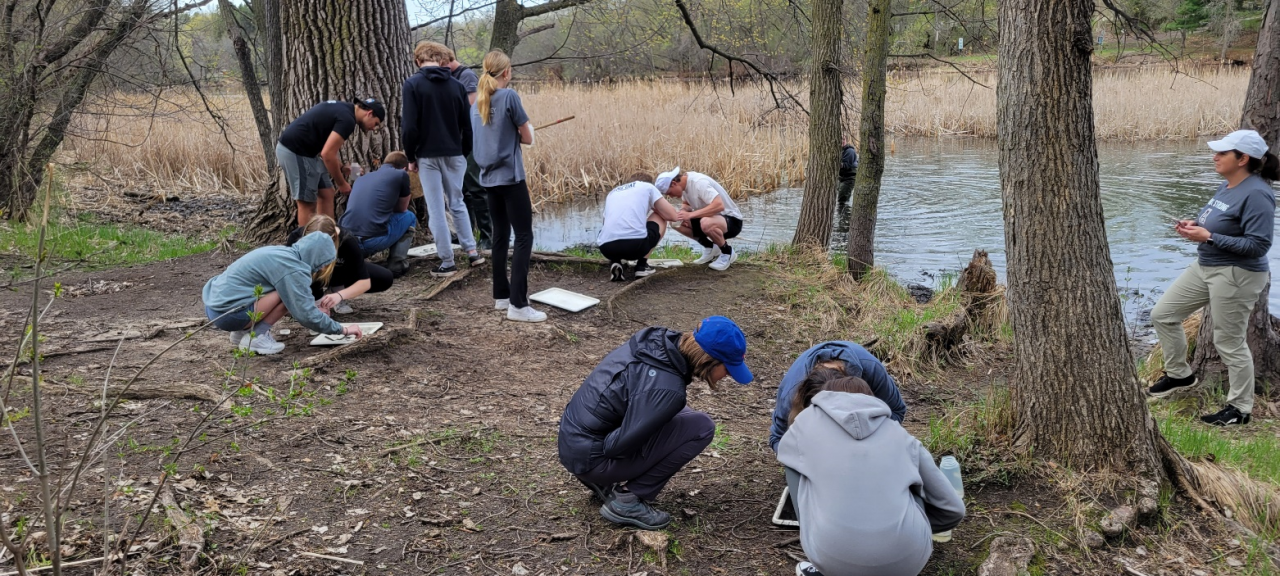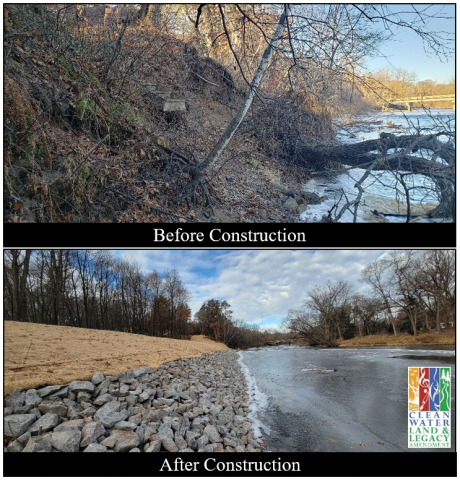Construction is beginning on six streambank stabilization projects on the Rum and Mississippi Rivers in Anoka. These sites have had significant and accelerating erosion in recent years due to sustained high water and recreational watercraft. Most of the sites lie between two popular boat launches on the rivers.
Cumulatively, over 720 linear feet of eroding riverbank will be stabilized. The primary stabilization technique will be rock riprap on the lower portion of the slope, with a seeded and blanketed vegetative zone above the rock. This vegetative zone will be comprised of native species of grasses, sedges, and forbs to enhance the habitat and aesthetic value of the shorelines, while also providing deep root structure to anchor the soil in place above the rock.
The projects will be done via barge from the water, a first for ACD-managed projects. Many of these sites had been on our inventories, but were not cost-effectively constructible in a typical fashion from land. With a contractor that can install the project from the water, concerns about equipment access between buildings and site restoration on individual properties are non-factors. Beyond stabilizing these six eroding shorelines, we are hopeful that this new construction technique opens up more potential streambank stabilization projects that would have otherwise not been possible from land.
Project updates will be provided as construction progresses. To see these and other streambank stabilizations projects already installed throughout Anoka County, please see the virtual project tour on ACD's website.
